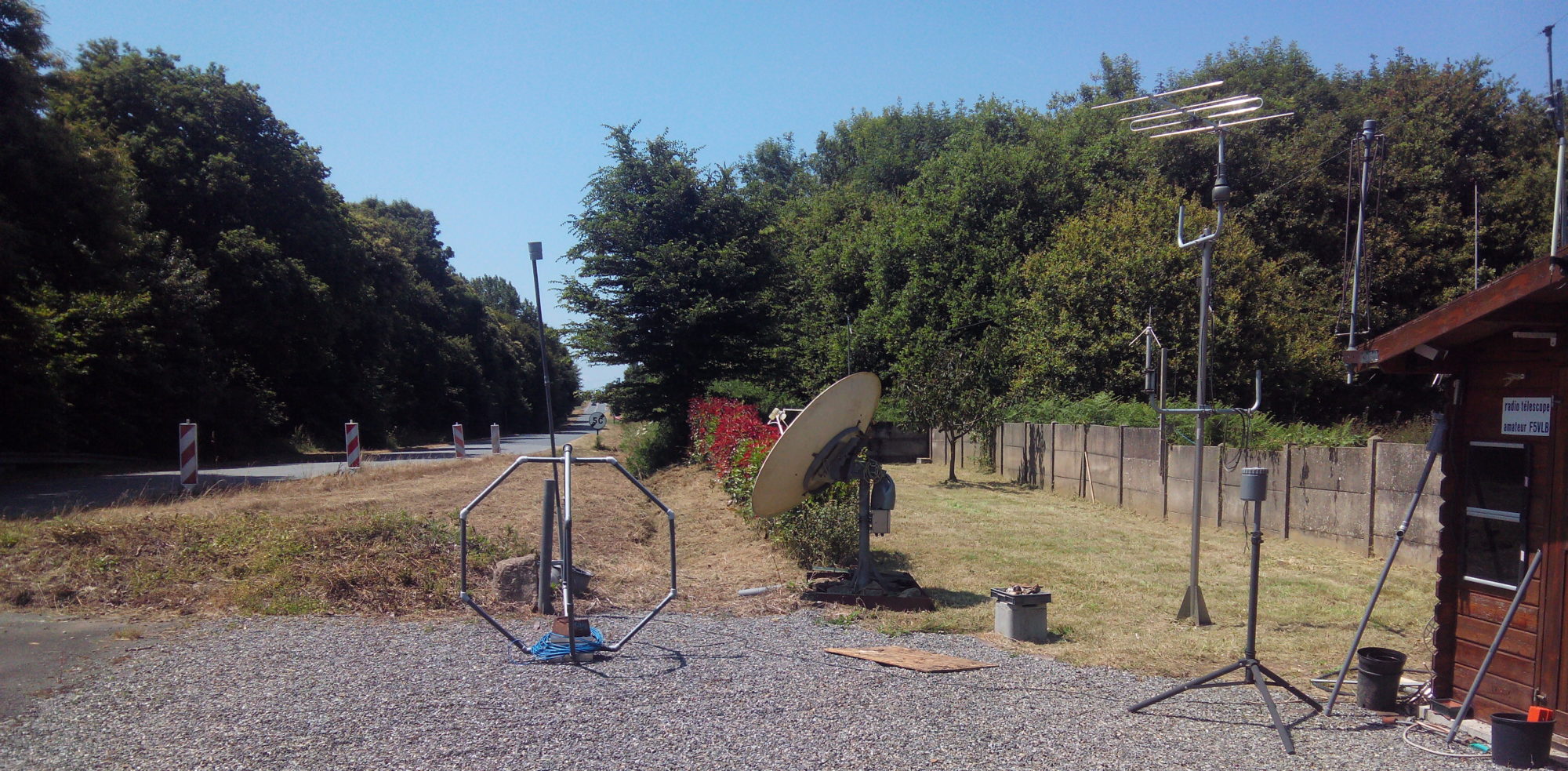The use of earth probes antennas is not new. Already used during the First World War by artillerymen to communicate with the outposts for the exchange of firing coordinates. Used more peacefully by speleologists and SAR’s to rescue people underground. Passionate about VLF’s, I wanted to try and for a few years now, I have accumulated a lot of experience, contacts and readings that I want to share here. Good visit, good reading …. and visit also our FB group at https://www.facebook.com/groups/earthprobes/
History in brief
From Wikipedia, the free encyclopedia
The U.S. Navy Clam Lake, Wisconsin ELF transmitter in 1982. Sections of the rights of way for the power lines that make up the two crossed ground dipole antennas can be seen passing through the forest at lower left.
In radio communication, a ground dipole, also referred to as an earth dipole antenna, transmission line antenna, and in technical literature as a horizontal electric dipole, is a huge, specialized type of radio antenna that radiates extremely low frequency (ELF) electromagnetic waves. It is the only type of transmitting antenna that can radiate practical amounts of power in the frequency range of 3 Hz to 3 kHz, commonly called ELF waves. A ground dipole consists of two ground electrodes buried in the earth, separated by tens to hundreds of kilometers, linked by overhead transmission lines to a power plant transmitter located between them. Alternating current electricity flows in a giant loop between the electrodes through the ground, radiating ELF waves, so the ground is part of the antenna. To be most effective, ground dipoles must be located over certain types of underground rock formations. The idea was proposed by U.S. Dept. of Defense physicist Nicholas Christofilos in 1959.
Although small ground dipoles have been used for years as sensors in geological and geophysical research, their only use as antennas has been in a few military ELF transmitter facilities to communicate with submerged submarines. Besides small research and experimental antennas,[5][6] four full-scale ground dipole installations are known to have been constructed; two by the U.S. Navy at Republic, Michigan and Clam Lake, Wisconsin, one by the Russian Navy on the Kola peninsula near Murmansk, Russia, and one in India at the INS Kattabomman naval base.The U.S. facilities were used between 1985 and 2004 but are now decommissioned.
My project
By installing my earth probes antenna (EPA in short) I wanted to complete my measurements on the propagation of VLF’s made with two loop antennas. For several years, I have been able to carry out ground wave and sky wave propagation measurements in different situations. Until the day I came across an article explaining that the waves do not rebound on the ground, but penetrate it, to a depth depending on the frequency, and generate a signal in the buried ferrous materials. From there was born my intention to try to detect these signals.
